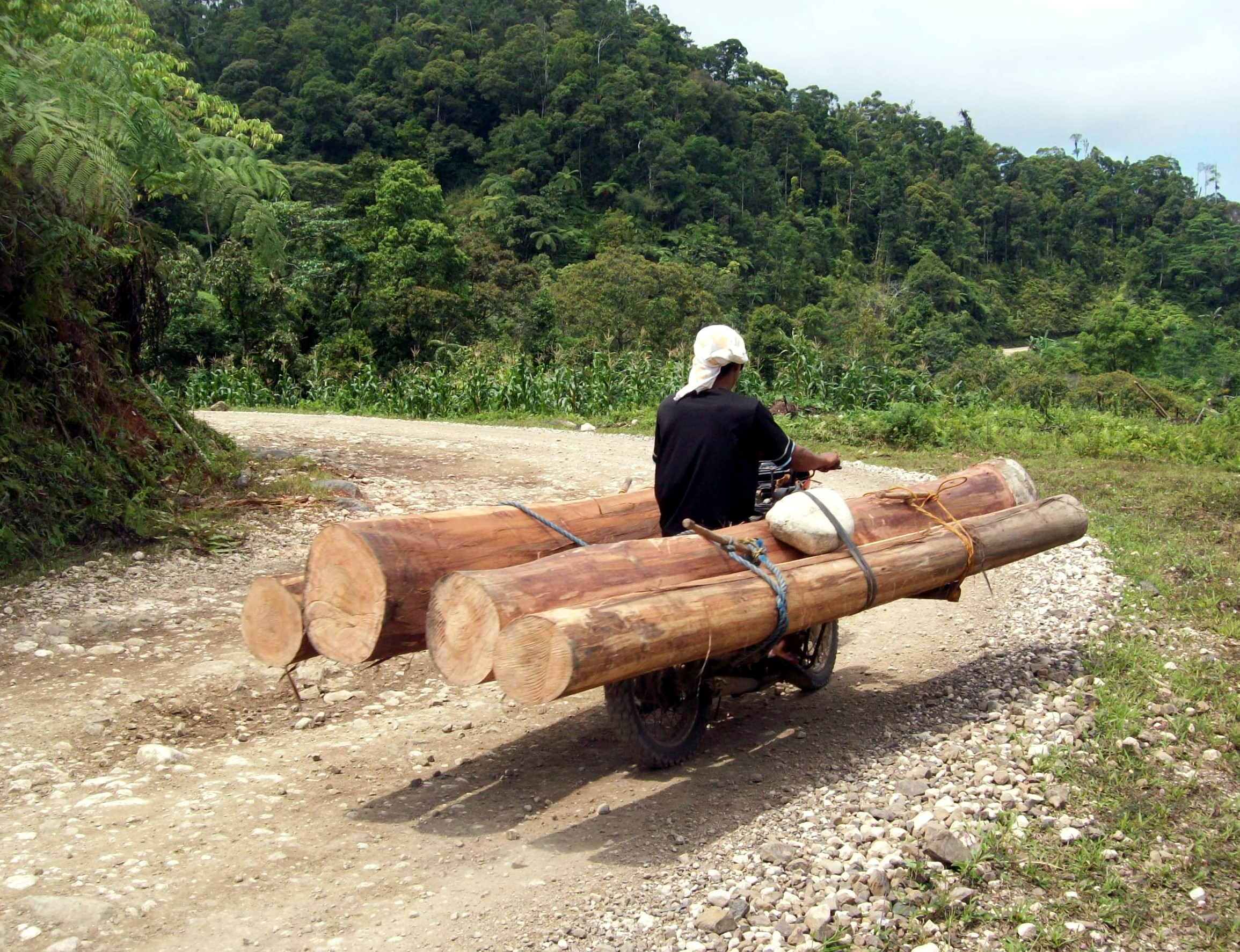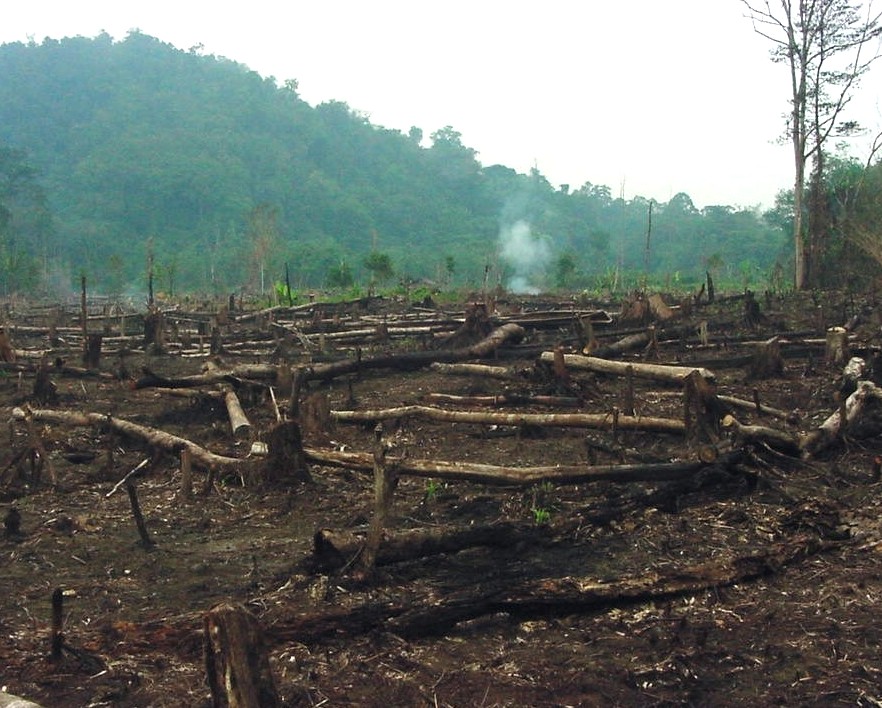By Henrylito D. Tacio
“I was a shabu (crack or poor man’s cocaine) dealer for six years,” admitted Bagut, who’s from Agusan del Sur. “I was also in prison, and even there, shabu dealing continued. I operated here in the Agusan marsh area. But I realized that it was almost like killing people and their families as well, even with all the money I earned.
“I did not realize that I was killing them, I just sold shabu so I could have money, but I never knew that I was also killing their families. It really has a great effect, it shouldn’t have been my business. I promised myself then that I would not do anything that harmed other people, so I shifted to chainsawing.”
Bagut was one of the 53 people featured in the book Forest Faces: Hopes and Regrets in Philippine Forestry, published jointly by the regional office of the UN Food and Agriculture Organization (FAO) and Environmental Science for Social Change (ESSC).
“It’s been two years since I stopped (selling shabu), and I went into the chainsaw business last year,” he said. “I have expanded, and I have a mini-sawmill and a bandsaw now. But what I am doing is illegal because I don’t pay forest charges, I have no permit, and I have no license. But that’s only where I am illegal because of the government and what it requires of me.
“But my work with people is legal,” he continued, “because this is how they source what they need to be able to eat. I may be illegal now, but I’m not harming anyone. I keep people alive, and I’m providing a livelihood to people.”
Farmers who live around three kilometers away from his mini-sawmill supply him the wood, mostly lauan. “They got their wood from their kaingin areas,” Bagut was quoted as saying in the book. “They cut the trees so they can plant rubber. This is what we call salvaging, this is the purpose for cutting the trees and then they will plant rubber trees after. I don’t tell them to cut the trees so that I can buy their wood; this is theirs, they are cutting down the trees so they can plant rubber. Sometimes, they also plant falcatta, but it is mainly rubber.”
Bagut doesn’t choose any kind of wood as long as it’s not rotten. He sells the woods mostly for house construction. When asked if he is damaging the forest because of his business, he replied negatively by saying, “I do not disturb the forest.”
Bagut also supplies for free the coffin demand in the municipality where his sawmill is located. He doesn’t make the coffin himself but just supplies the wood needed. “The coffins cost around P5,500 but I donate this to the town for free,” he said. “That’s my contribution. So even if I don’t have a permit nor a license for my business, my work is needed. And I don’t abuse.”
“Today’s degraded forest reflects a history of logging and abandonment,” wrote Peter Walpole, ESSC’s executive director, in his introduction of the 242-page book, which is full of photos and quotable quotes.



Forest crisis
“A forest is more than just trees,” said the late national scientist Dr. Dioscoro L. Umali. “It is a community throbbing with life – an ecosystem of plants, animals and their surroundings; an all-embracing web of life woven into soil, water, and air. These elements interact with each other. They all are essential parts of a whole system.”
Umali said that tampering with any one of these elements disrupts the balance of the ecosystem. “In nature,” the Ramon Magsaysay laureate pointed out, “there are no rewards and punishment; there are only consequences.”
So, where have all our forests gone?
The first nationwide forest inventory was completed in 1969, and only 10.4 million hectares of forest were left out of the 17 million hectares that used to occupy the country’s land area of 30 million hectares.
By 1980, only about 7.5 million hectares of forest were left. At the end of 1990, only 6.64 million remained. Most of those considered “old growth forest” were confined to steep and very steep areas and were not often accessible.
In 1995, the country barely had 5.6 million hectares (less than 19% of the land area) of forest cover. “For at least 20 years now, we have this forest crisis which has been getting worse every year,” Dr. J.A.V. Revilla, then a visiting professor at the Forestry Development Center of the University of the Philippines at Los Baños (UPLB), told a conference organized by the National Academy of Science and Technology.
“At the rate we are re-establishing forest cover during the last 20 years, it would take us 250 years to reforest (the country),” Dr. Revilla deplored. “That is assuming that forest cover loss stops immediately and that we finally become effective in our reforestation efforts.”
If you think deforestation happens only in the uplands, you’re wrong. Even in the lowlands, cutting of trees is also rampant. Most of these trees are found in the coastal zone, and they’re called mangroves.
“Approximately two-thirds of the country’s original mangroves have been lost,” noted Population Reference Bureau’s Kathleen Mogerlgaard.
“Wood-pauper”
In the past, forest resources helped fuel the country’s economy. In the 1970s, the Philippines has touted as the prima donna among world timber exporters. Today, it is considered “a wood-pauper,” to quote the words of multi-awarded journalist Juan Mercado.
Aside from logging (whether legal or illegal), other causes of deforestation in the Philippines are forest fires, “kaingin” farming (slash-and-burn agriculture), and mining operations. Volcanic eruptions have also devastated some of the country’s tropical rainforests—ditto for typhoons, which have devastated considerable hectares of forest areas.
The surging population has compounded the problem. There were only 19 million Filipinos, according to the 1940 census. Today, the population has surged to more than 100 million people.
“Poverty, lack of jobs and wages, and absence of farm lots in the lowlands have forced some people to invade the forest,” commented the late Senator Heherson Alvarez, who served as environment secretary during the administration of Corazon Aquino.
Spreading cities have also contributed to the decimation of forests. “Asphalt is often the last harvest for many forests,” Umali once said.
The outcome: food crisis, the devastation of lands and water resources, biodiversity facing extinction. “The productivity of the country’s agricultural lands and fisheries is declining as these (forest) areas become increasingly degraded and pushed beyond their capacity to produce,” said Mogerlgaard.
Consequences
The removal of forest cover has bolstered soil erosion in the uplands. “Soil erosion is an enemy to any nation – far worse than any outside enemy coming into a country and conquering it because it is an enemy you cannot see vividly,” reminded Harold Ray Watson, another Ramon Magsaysay recipient (1985 for international understanding). “It’s a slow creeping enemy that soon possesses the land.”
As a result, food production is jeopardized. “The loss of nutrient rich soil reduces crop yields and contributes to the expanded use of chemical fertilizers – a practice that can, in turn, pollute water resources,” said Jethro P. Adang, the director of Davao-based Mindanao Baptist Rural Life Center. “Rivers and streams also carry eroded soil to the coasts, where it interferes with fish nursery areas.”
But that’s not all. “Extensive soil erosion has resulted in the siltation of waterbeds, reservoirs, and dams, and in the process shortening their productive life spans,” said Dr. Germelito Bautista of the Ateneo de Manila University.
The Magat Dam reservoir, for instance, has been reported to cut its probable life span from 100 years to 25 years. The Ambuklao Dam reservoir has had its life halved from 60 to 32 years as a result of siltation.
A water crisis is looming. “There has been a drop of 30% to 50% in the country’s water resources in the past 20 years or so,” pointed out Dr. Rafael D. Guerrero, a scientist with the National Academy of Science and Technology.
“Rapid forest loss has eliminated habitat for unique and threatened plant and animal species,” Mogerlgaard observed. “At the rate our forests are getting destroyed, many species may no longer be around when we need them,” Adang added.
More than 400 plant and animal species found in the country are currently threatened with extinction, including the Philippine eagle, waling-waling, and tamaraw, the World Conservation Union contends.
According to studies, more than 60% of the world’s people depend on plants for medicine. Relatively few of the 250,000 kinds of plants in the world have been fully examined, so it stands to reason that the remaining species contain many unknown compounds of probable therapeutic importance.
Dr. Gordon Cragg, chief of the National Products Branch of the US National Cancer Institute, argues: “I still maintain that no chemists can ‘dream up’ the complex bioactive molecules produced by nature, but once the natural lead compounds have been discovered then the chemists can proceed with synthetic modifications to improve on the natural lead.”
He cites taxol, the only drug that shows promise against breast cancer and ovarian cancer, as a case in point. “The drug was initially found in the western yew by an American government program randomly screening plants for anti-cancer activities,” he said. “Its molecule is structurally unique and there is no way it could have been visualized if it had not been discovered in nature.”
Trees are one of nature’s most efficient weapons to tie down steep hillsides, check the growth of big gullies, stabilize unsteady stream banks, and screen cultivated fields from harmful winds. But the country’s mountains are bald in large patches almost everywhere.
“The illness of our forest is complicated – and cannot be cured – with one-stop prescription of a single medicine,” Alvarez reminded.
Filipinos are therefore urged to stop cutting trees now and preserve the remaining forests the country has. “We have laid to waste millions of hectares of forest land, as though heedless of the tragic examples of the countries of Africa, the Middle East, and the Mediterranean, where large areas have become barren, if not desertified,” Alvarez said. “If we have not, in fact, reached this state, we are almost at the point of irreversibility.”
Dr. Ernesto Guiang, a forestry consultant, echoed the same concern: “We are now at the eleventh hour. We have to pay attention to the handwriting on the wall with respect to our forests.”

